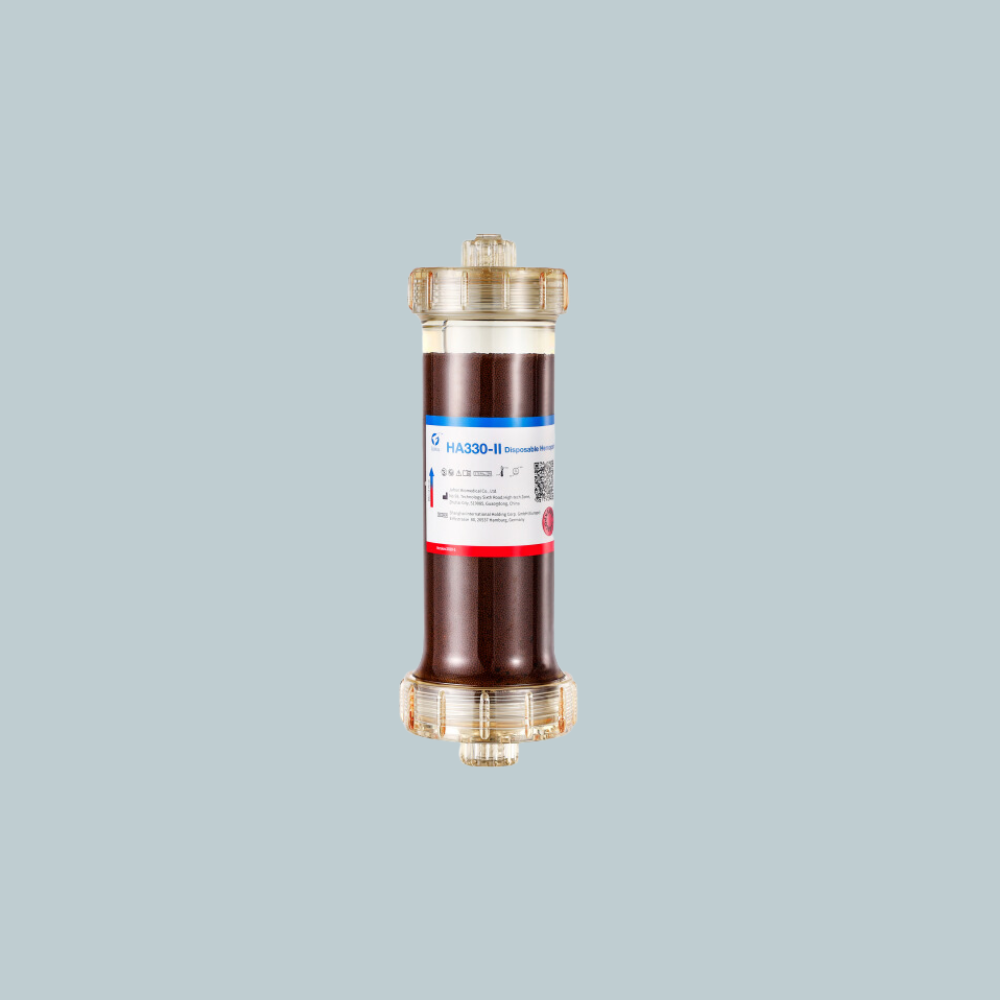Disposable Hemoperfusion cartridges HA 330-II
HA 330-II
Acute Liver Failure (ALF) was defined as rapid development of hepatic dysfunction, specifically coagulopathy with international normalized ratio (INR) ≥1.5 and clinical jaundice, mental alteration (encephalopathy), while ascites may or may not be present, in a patient without preexisting cirrhosis and with an illness within 26 weeks.
ALF may be categorized as hyperacute (< 1 week), acute (1 to 4 weeks) and subacute (4-26 weeks). The leading causes include drug induced liver injury, followed by viral etiologies.
Patients with severe ALF may develop a sudden onset of cerebral edema and multi-system organ failure due to the accumulation of nitrogenous toxins (hyperammonia and hyperbilirubinemia) and release of cytokines, eventually leading to death. ALF due to many causes is a condition of difficult treatment with high mortality rates in spite of Intensive Care Unit management.
Acute-on-Chronic Liver Failure (ACLF) was defined as serum bilirubin >5 mg/dL and an INR ≥1.5 or prothrombin time activity (PTA) <40%, complicated within 4 weeks by ascites and/or hepatic encephalopathy (HE) in patients with previously diagnosed or undiagnosed chronic liver diseases. ACLF includes a subset of cirrhotic patients with high mortality and evidence of new organ failure as a result of complications such as bacterial infection, encephalopathy, or gastrointestinal bleeding.
Many studies reported that ACLF was accompanied by an inflammatory profile mimicking severe inflammatory response syndrome, featured by predominantly proinflammatory cytokines that are thought to mediate hepatic inflammation, apoptosis and necrosis of liver cells, cholestasis, and fibrosis, may lead to progression of stable cirrhosis to ACLF. Despite recent progress of medicine, ACLF remains a therapeutic challenge with extremely poor prognosis.
The past decades witnessed the rapid development of Artificial liver support system (ALSS), which have emerged as an effective approach to managing patients with liver failure.
Many types of ALSSs, including therapeutic plasma exchange (TPE), hemoperfusion, continuous hemodiafiltration, molecular absorbents recirculating system (MARS) and fractionated plasma separation, absorption and dialysis system (FPSA), have been developed and applied to the treatment of liver failure.
Even though Therapeutic Plasma Exchange (TPE) has been reported to be effective in improving liver function and reducing mortalities of ALF and ACLF, it is restricted by requirement of large amount of good plasma, and risks of allergic reaction to plasma and blood-borne disease transmission.

